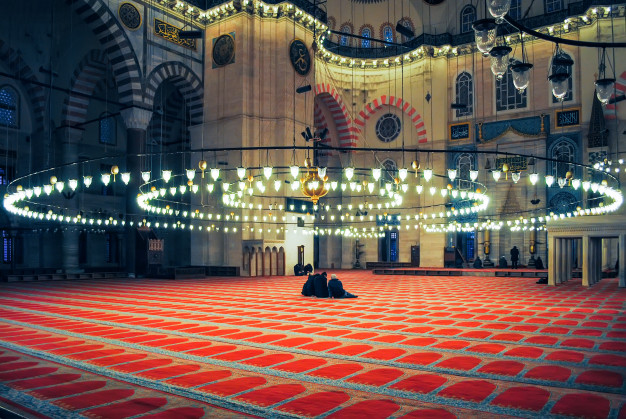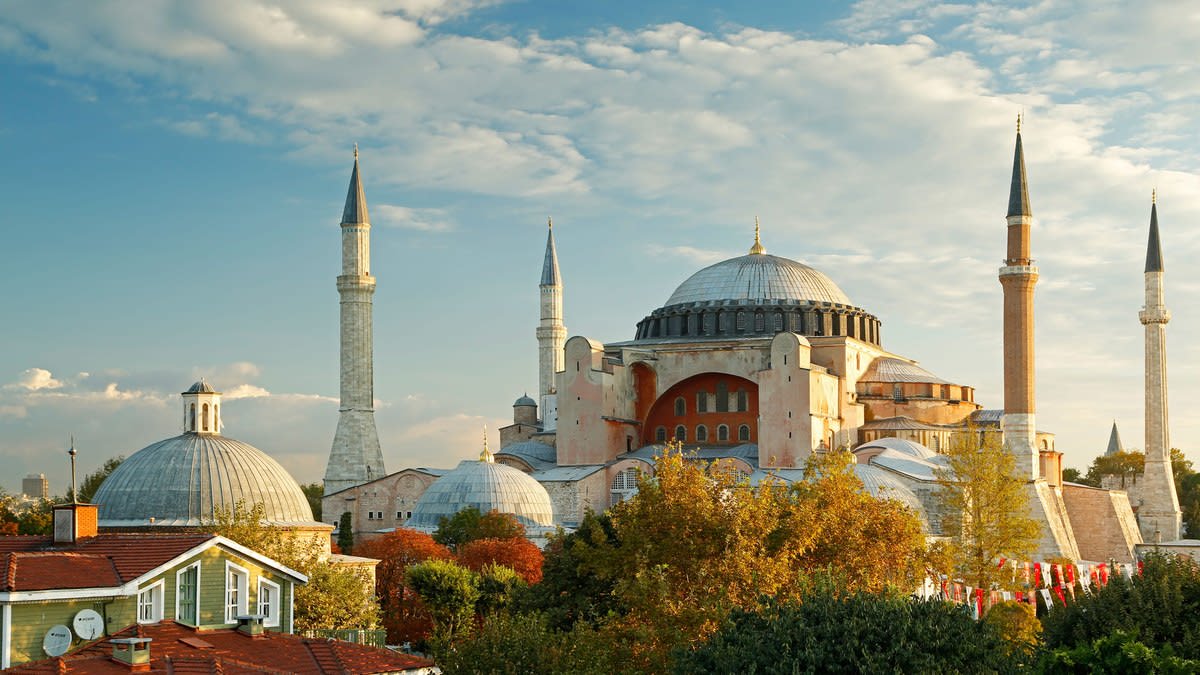The first Hagia Sophia was originally built as a Basilica for the Greek Orthodox Christian Church under Costanius reign during 360 A.D. However, its function has changed several times in the centuries to come. It was burned to ground in 404 A.D during riots against Emperor Arcadius as a result of political conflicts within emperor’s family.
It was rebuilt by Emperor Theodosius 11, who gave it a new structure and completed it in 415 A.D. However, after more than a century, the structure was burned down for second time during Emperor Justinian 1, and proved fatal for Basilica of Greek Orthodox faith.
Then under reign of Emperor Justinian new Basilica- the third Hagia Sophia was completed in 537 A.D, and as of today the structure is intact. As Greek Orthodoxy was the official religion of the Byzantines, the Hagia Sophia was considered the central church of the faith, and it thus became the place where new emperors were crowned and Hagia Sophia started serving this pivotal role in Byzantine culture and politics for much of its first 900 years of existence. During 13th century Crusades, Hagia Sophia faced another massive destruction but it was reconstructed when Byzantines took over the control of city.

At the age of 21, Sultan Muhammad Fateh (Mehmed the Conqueror) conquered Constantinople (modern-day Istanbul) in 1453 and brought an end to the Byzantine Empire. It is quite natural for conquerors to occupy the enemy’s most important and influential places, and Hagia Sophia was not only a Church, rather it was the center of power politics and a symbol of Byzantian glory. Many historians opine that it was not the fall of Constantinople, in fact it was the rise of empire and civilization. Sultan Fateh converted the symbol of power and politics into a mosque. After the fall of Ottoman Empire in 1935, the founder of modern Turkey, Mustafa Kemal Atatürk ordered Hagia Sophia to open as a museum, as a symbol of the secular, modern republic, which he was forging from the ruins of the Ottoman Empire.
Recently, a petition was filed in supreme court and the day came when the verdict again changed Hagia sophia’s status from the museum to the mosque. Clearly, the Hagia Sophia’s campaign was not just about Islam—it is about Turkish nationalism too. Erdogan’s government has not only reversed the republic’s aversion to Islam but also glorified Mehmet the Conqueror and the Ottoman past. “Conquest means the removal of shackles on people’s hearts, and with conquest came the civilization, Erdogan told a rally on the anniversary of the fall of Constantinople on May 29 last year.
- Hagia Sophia’s Brief History - 11 July 2020


Aoa dear jameel please also write down the above article in Urdu language so that a common person also understand the history about aye sofia. Shukriya
Very informative, keep going to continue.
Very enlightening and insightful piece of writing.
Well written content. A good step dear